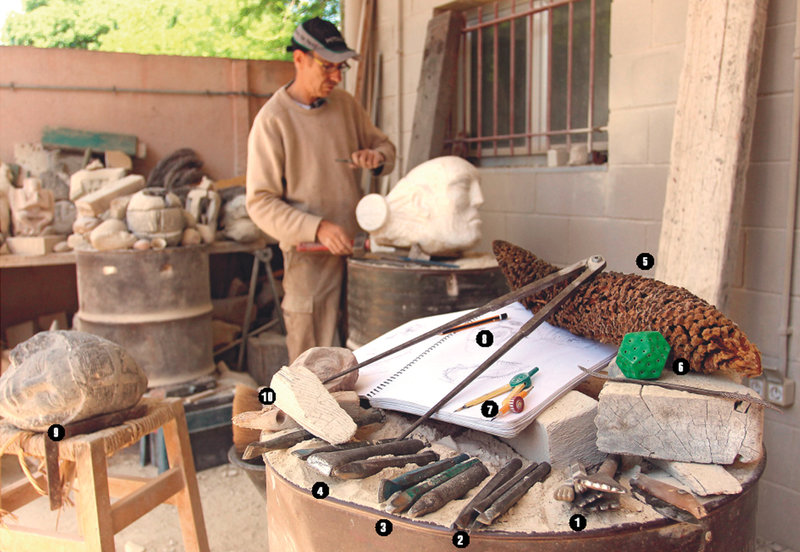Enric Sala
Sculptor
Born in Vic, Enric is a strong believer in the idea of creation as a collaboration between the artist and his or her subject. It is a process in which both parties change, evolve and find a meetng place. His inspiration comes from natural and biological elements, and he studies the natural geometry of such things as seeds, plants, pine cones, shells, leaves, and concretions, microscopic elements. Entic is intellectually restless and also a passionate reader of science and philosophy; he sees himself as a translator of an interconnected cosmos, a concept he tries to embody in his work.
Enric took an active role in the restoration of the gargoyles of Girona cathedral, as well as in the cathedral in Barcelona, the Sagrada Família and other Romanesque and Gothic restoration work around the country.
He has taught sculpture at the EMBA School of Fine Arts in Salt since 1997, which has the only stone carving workshop in the province of Girona.
Enric has exhibited in Barcelona, Vic, Granollers, Olot and Girona, among other places.
Catalonia Today visited him while he was giving classes at the EMBA in Salt, where he was surrounded by stone waiting to be sculpted, his tools and finished and unfinished sculptures. He is a pleasant and restless man and certainly captures the attention of his students.
In 2013 he was selected as one of the top sculptors and exhibited at Australia's Swell Sculpture Festival.
1. Gardiner: a serrated chisel used to shape the stone.
2. Escarpments: a set of flat-edged chisels for sculpture.
3. Punches: it is a tool that allows you to punch through the material as you like.
4. Half-round chisel: beaten with hammer blows and used for shaping.
5. Seeds, grains, pineapples, roots, and so on: natural forms that have a geometry that I use for inspiration in my creations.
6. Geometrical industrial plastic materials: polyurethane and acrylic. These also serve as inspiration in some ways.
7. Compasses: an indispensable tool for the creation of geometries
8. Pencil and paper: sketches are made on paper before drawing the final outline on the stone.
9. An almost finished sculpture: “almost finished” because quite often the sculptures are not finished.
10. Wedge: needed to hold the stone in place, andssential when working. The stone must be immobile when sculpting with the different tools.
www.enric-sala.com

